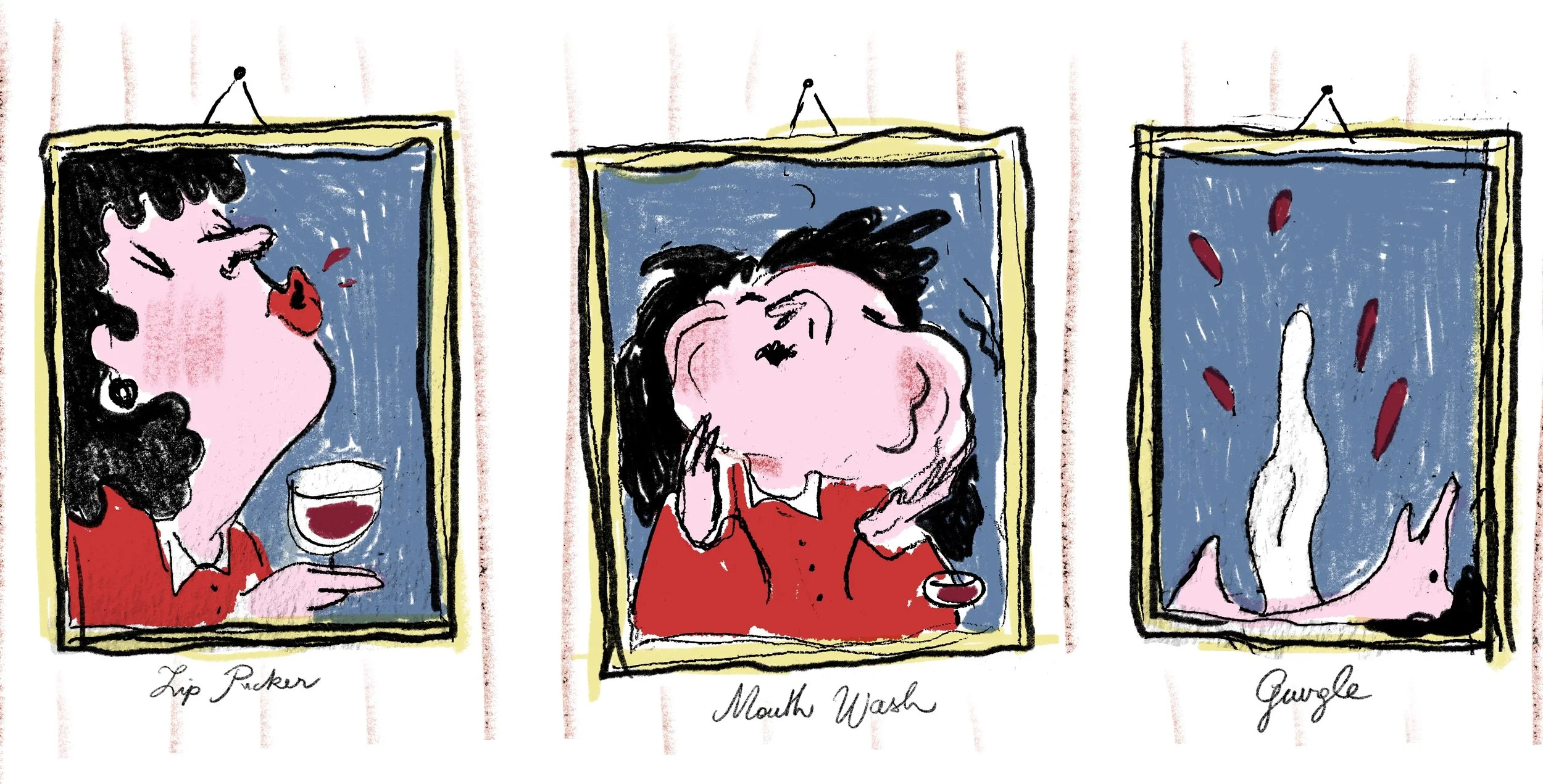How To Slurp
This piece was originally published in my “Wine Wisdom” column in Glug, Wine52’s monthly magazine
Has anyone ever told you that your slurping technique needs a little work? Perhaps it hasn’t come up in conversation, but without meaning to sound rude, it has been noted. The thing is, in wine tasting, the quieter and more demure you are, the less effective your mouth is. It’s true! You need to give your tastebuds something to cling to, to work on, and a shy little rinse just doesn’t cut it.
Don’t worry. There are certain techniques you can learn to really get a hold on all those gorgeous flavours and aromatics without spilling a mouthful all down your crisp white linen. Impress your friends and wow the other guests at your next wine tasting by following these easy tips.
The Lip-Puckerer
Take a sip (perhaps we should practice with water.) Hold the liquid in the front of your mouth and pucker your lips tight, like you’re trying to whistle, but instead of blowing, suck a tiny sliver of air into your mouth. This helps to aerate the wine, but it also enables the front of your tongue to take in the flavours and textures of the wine, giving you a first impression.
The Mouth Wash
With the same liquid in your mouth, move your cheeks in and out and rattle your tongue around like you’re swilling with Corsodil. Make your dentist proud. The insides of your cheeks are sensitive to the tannins in your wine, and your saliva glands will be activated by the acidity. You’ll also get a good coverage over the whole of your tongue for a full flavour analysis.
The Silent Gurgle
A bit of a professional technique, this is really just a gargle with as much decorum as you can muster. Open your mouth slightly (without drooling) and breathe in, allowing the liquid in your mouth to rumble into the back of your throat. The aim here is to aerate the wine so that aromatic particles can travel up the back of your sinuses, giving you a full picture of its organoleptic properties. If you make a noise, don’t worry, you’re doing important work. Science!
